TOOLS
Attribute of Tools
Lorem ipsum dolor sit amet, consectetur adipiscing elit, sed do eiusmod tempor incididunt ut labore et dolore magna aliqua
About
Overview of the attribute. Lorem ipsum dolor sit amet, consectetur adipiscing elit, sed do eiusmod tempor incididunt ut labore et dolore magna aliqua. Ut enim ad minim veniam, quis nostrud exercitation ullamco laboris nisi ut aliquip ex ea commodo consequat. Duis aute irure dolor in reprehenderit in voluptate velit esse cillum dolore eu fugiat nulla pariatur. Excepteur sint occaecat cupidatat non proident, sunt in culpa qui officia deserunt mollit anim id est laborum.
“Where the world is dynamic, evolving, and interconnected, we tend to make decisions using mental models that are static, narrow, and reductionist." — John Sterman
The claims department of a Fortune 100 financial services company faced several critical challenges. Staff turnover had reached unprecedented levels, with remaining employees exhausted and emotionally drained by an escalating volume of customer claims. The increasing complexity of these claims necessitated more time, particularly with emotionally charged customers, yet hiring efforts proved ineffective in addressing the persistent understaffing problem. The impending retirement of key senior leaders further exacerbated concerns.
A team of executives, managers, and subject matter experts strengthened and applied systemic intelligence (SysQ) to address this complex, dynamic challenge. The team embarked on a SysQ mapping and modeling process. The learning journey’s objective: identify systemic causes of chronic turnover and claims errors and develop effective strategies to improve these workforce dynamics. Through the SysQ Process, they explored the structural reasons for their difficulties in attracting, developing, and retaining a capable workforce.
The cross-functional team developed a comprehensive theory of the claims process — encompassing workflow, staffing, skills, and stress. The resulting ecosystem strategy map improved and integrated existing mental models across the organization; it provided a comprehensive and balcony-level view of the claims process. By applying SysQ Thinking Skills, they significantly refined this working theory of how the claims ecosystem generated processing errors and staff turnover.
A key discovery was the pivotal role of emotional intelligence (EQ) — or lack of it — played in the workforce dynamics. Building EQ was particularly essential for senior staff — it improved the mentoring of more junior staff. High EQ proved essential for both skill development and stress management. Mentoring was needed to facilitate staff learning and increase productivity.
However, the knee-jerk response to turnover — increasing the hiring rate— inadvertently exacerbated the situation. Too many new staff overwhelmed senior leaders’ ability to keep up with mentoring; this slowed the rate of learning by junior staff, thus lowering overall productivity and driving up the workload per staff member. This led to additional stress. And stress further compounded the issue, leading to decreased productivity, increased attrition, and costly errors. This created a nasty reinforcing feedback loop — a vicious cycle.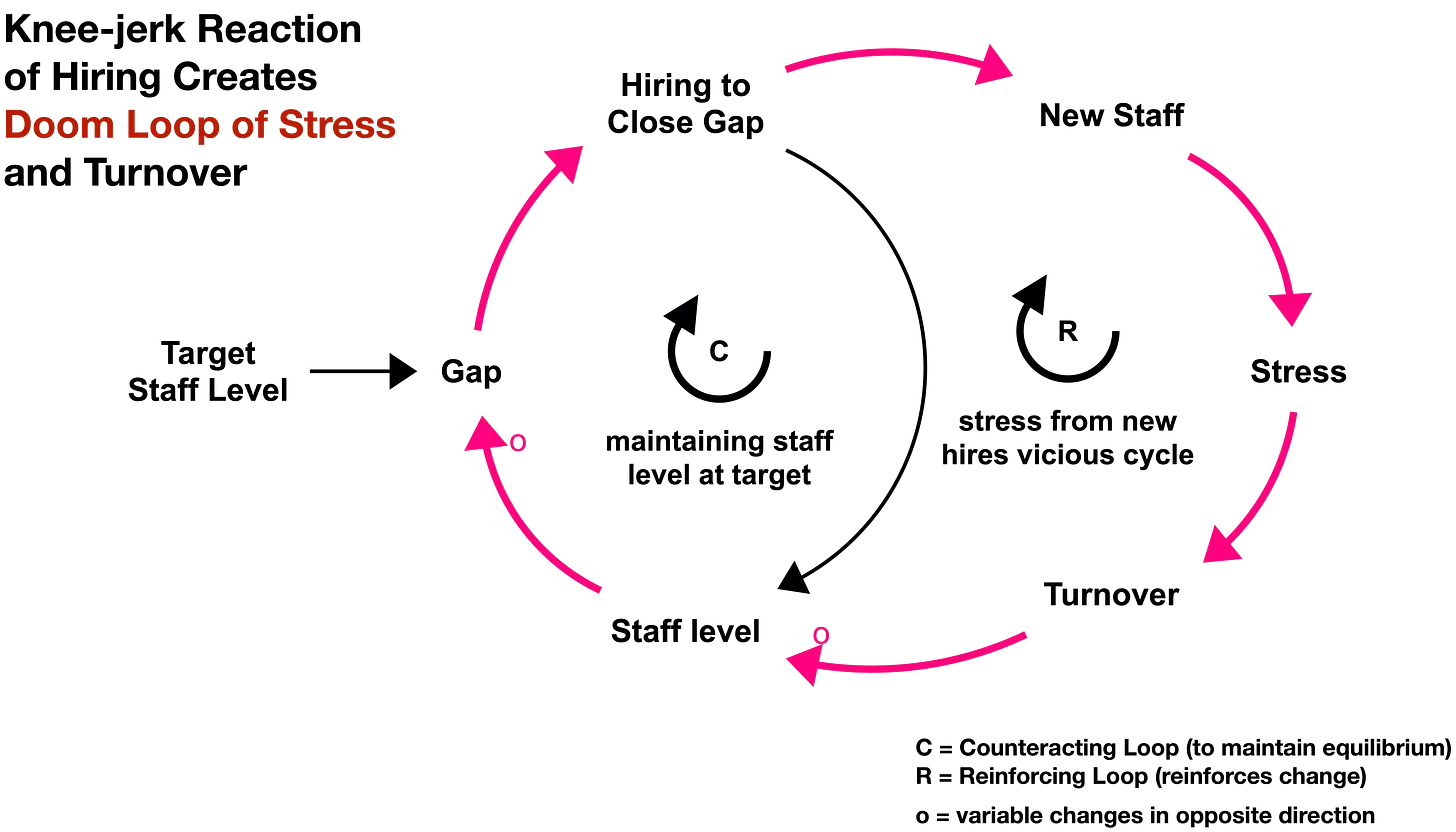
The comprehensive mapping process underscored the importance of balancing workloads and mentoring in fostering a supportive work environment and enhancing staff effectiveness. Notably, it revealed that the prevalent practice ofrapidly hiring when attrition rates increase actually exacerbates burnout and attrition.
The collaborative mapping process emphasized the significance of proactive measures to address workforce challenges. By providing emotional intelligence training to senior staff to enhance mentoring, implementing stress management training for all employees, and optimizing processes, the company successfully managed stress, reduced decision times, and minimized error rates in claims processing. These interventions led to a more resilient and nimble team, capable of meeting the evolving business demands in a complex environment.
TRADITIONAL PROBLEM-SOLVING APPROACHES ARE INADEQUATE, INEFFECTIVE, AND OFTEN MAKE THINGS WORSE
In today’s interconnected world, organizations encounter increasingly intricate challenges that defy simplistic solutions. For instance, corporations striving to maintain market dominance, government agencies grappling with public health and well-being concerns, and non-profits working to combat poverty all face a common reality: traditional problem-solving approaches are inadequate.
Many organizations adopt a “mechanical mindset,” viewing issues as isolated events to be resolved with straightforward solutions. This approach is effective for routine problems with clear cause-and-effect relationships and established solutions. However, today’s most pressing organizational challenges are adaptive and complex, resisting simple solutions.
As John Sterman (Jay W. Forrester Professor of Management at the MIT Sloan School) states in Public Health Matters, “Where the world is dynamic, evolving, and interconnected, we tend to make decisions using mental models that are static, narrow, and reductionist. Among the elements of dynamic complexity people find most problematic are feedback, time delays, and stocks and flows.”1
Systemic Intelligence (SysQ) provides a powerful framework for comprehending and addressing the most challenging, perplexing, and intractable organizational issues.
The SysQ Process, when rigorously applied with the SysQ mindset, skills, and tools, enables the identification of deeper patterns and relationships that drive organizational behavior. Mental models developed with SysQ include Sterman’s feedback, time delays, and stocks and flows. Understanding the drivers of ecosystem dynamics is crucial for developing actionable and transformative strategies. One of the most effective ways to grasp these drivers is by creating an ecosystem strategy map, just like the claims processing department developed.
HUNTSVILLE’S ECOSYSTEM STRATEGY MAP POWERED ECONOMIC GROWTH
A recent headline by WBHM — NPR News for the Heart of Alabama — highlights the impact of a community-wide ecosystem strategy mapping effort.
Mississippi wants more tech jobs. Here’s what it can learn from Alabama’s tech success
“The Huntsville/Madison County Chamber of Commerce said about 15 years ago it had that same problem with retention. Companies were drawing in young talent from across the country for internships and entry levels programs, but they would leave for bigger cities.
The reason? They were bored.
So the city and chamber worked to find out what would entertain and stimulate young tech talent and bring in those features. Huntsville now has an outdoor shopping mall with restaurants, a minor league baseball team, a food truck festival and an ice-skating rink in the winter. Lucia Cape, the head of economic development at the Huntsville/Madison County Chamber of Commerce, said the efforts to improve the city’s quality of life worked and led to more talent sticking around.
‘The soft stuff is almost harder because you can’t just put money on it and contract it out,’ Cape said. ‘You have to be responsive and it has to be, you know, genuine.’
O’Mara agrees that quality of life is essential for keeping and attracting the talent needed to spur innovation.
‘Part of what made Silicon Valley and other places thrive is not just investment in tech or engineering,’ O’Mara said. But investment in social infrastructure, having strong public schools, having thriving neighborhoods.’”
The Chamber of Commerce identified the “soft stuff” by first developing an ecosystem strategy map. During the mapping process, the cross-sectoral team came to an uncomfortable realization: their current tech strategy of importing more senior-level STEM professionals was actually discouraging recent college graduates from staying in Huntsville.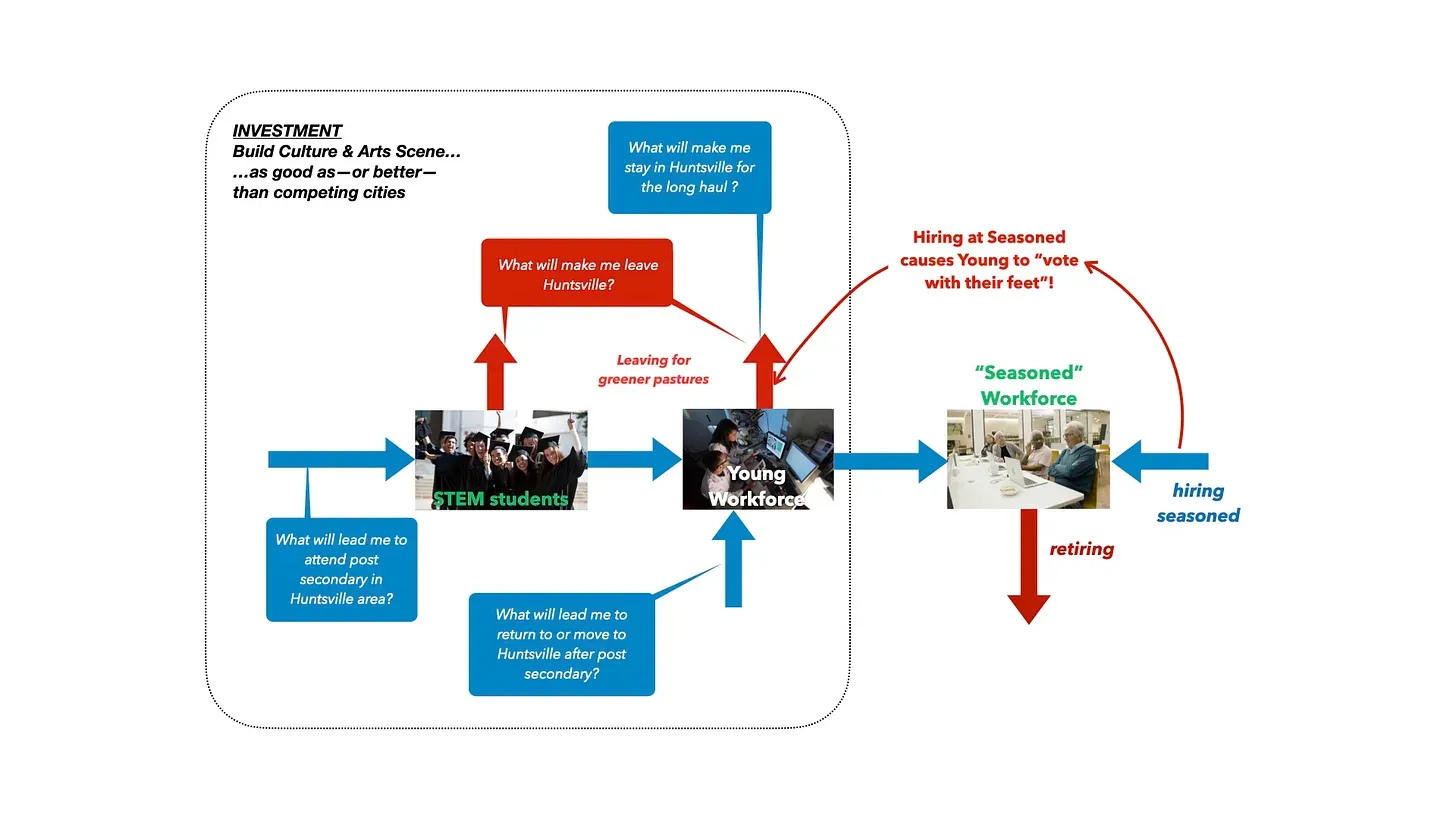
Instead, the map revealed that by building a community with a strong arts and culture scene — attributes that coastal tech centers possessed more readily than Huntsville — they could attract, retain, and nurture young STEM professionals. This approach created a more sustainable tech hub. Consequently, Huntsville became one of the most attractive communities in the US, as recognized by US News & World Report.
A more complete map is below.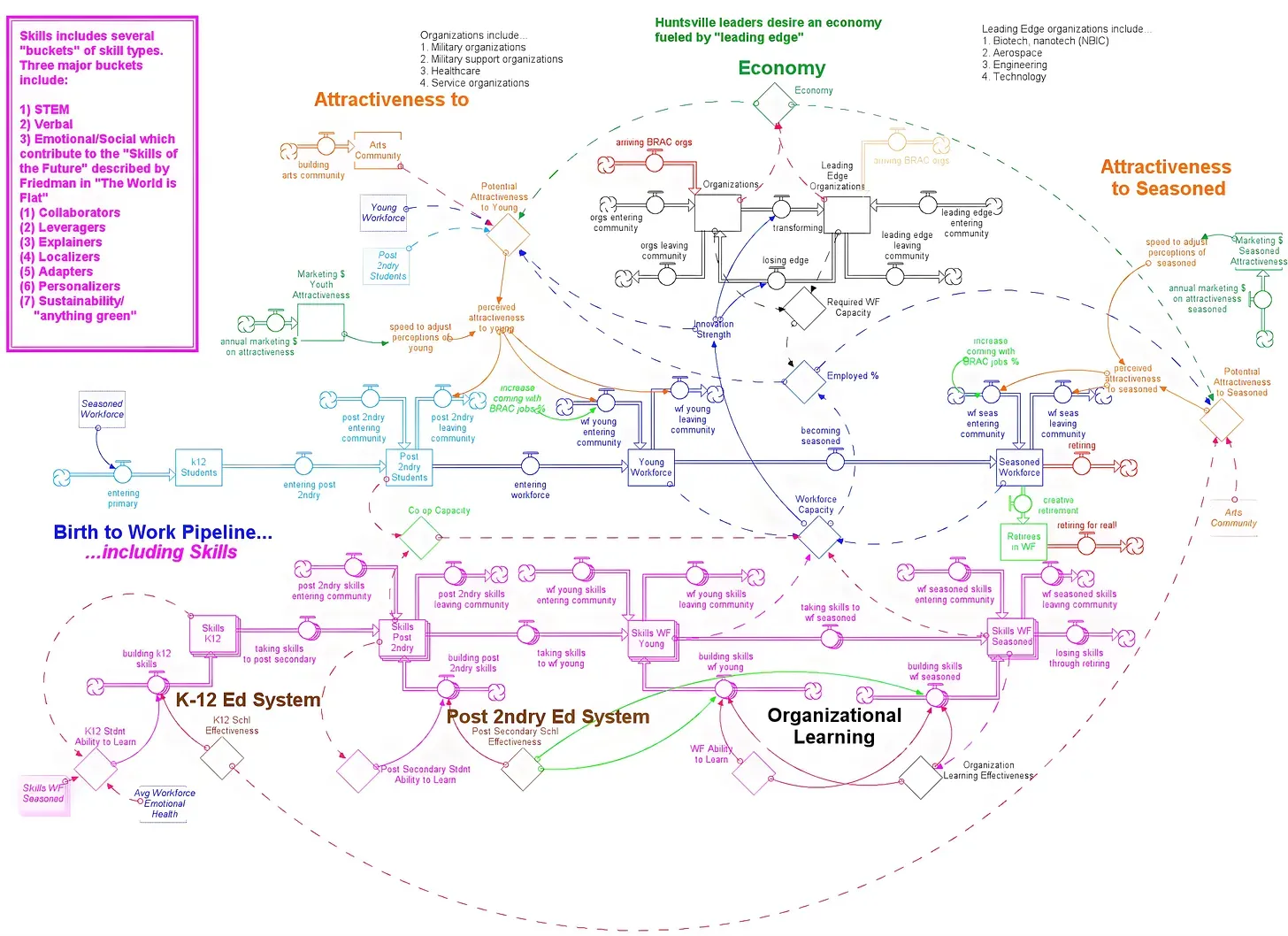
MOVING TO A HIGHER PERFORMANCE ORBITAL
Perhaps the most adaptive challenge an organization can attempt is the desire to transition from less than optimal performance to a level of high performance, akin to reaching a high-performance orbital. Organizations, communities, and nations perform at varying levels in terms of their collective health and well-being. Some organizations consistently innovate and sustain growth; others stagnate or even face setbacks, leading to their demise. Although this analysis applies equally well to communities and countries, let’s now focus on organizations.
Every organization has a current level of performance aligned with its mission. This encompasses various aspects, such as:
Aligning with the organization’s purpose — How effectively is the organization achieving its intended goals?
Customer service — Are customers experiencing exceptional service or subpar experiences?
Growth and expansion — Is the organization growing and increasing its reach and influence, or is it stagnant?
Employee well-being — Are employees fulfilled and nurtured, or are they miserable?
Overall impact — Is the organization nurturing people, creating public value, and generating a profit?
Consider an organization that is currently functioning at a suboptimal level. While it may not be performing abysmally, everyone agrees that there is substantial room for improvement. Customers and employees could experience greater satisfaction, and the organization could have a more significant global impact. Such an organization is stuck in a lower performance orbital. To achieve greater success, leadership aims to lift the organization’s performance to a higher level. They might establish a desired performance standard, which serves as a vision of an ideal future, by setting a BHAG. A BHAG stands for a Big Hairy Audacious Goal, and it was first introduced in the book Built to Last: Successful Habits of Visionary Companies by James Collins and Jerry Porras.2 Collins and Porras urged organizations to set their BHAG as a long-term objective to fundamentally alter the very essence of a business’s existence. Huntsville’s BHAG was to become the most thriving tech hub in the United States.
Such an organization is stuck in a lower performance orbital. To achieve greater success, leadership aims to lift the organization’s performance to a higher level. They might establish a desired performance standard, which serves as a vision of an ideal future, by setting a BHAG. A BHAG stands for a Big Hairy Audacious Goal, and it was first introduced in the book Built to Last: Successful Habits of Visionary Companies by James Collins and Jerry Porras.2 Collins and Porras urged organizations to set their BHAG as a long-term objective to fundamentally alter the very essence of a business’s existence. Huntsville’s BHAG was to become the most thriving tech hub in the United States.
An organization or community becomes trapped in a lower performance trajectory due to the way it organizes and deploys its resources — where and how it allocates attention and assets. The organization’s organizational structure, resource allocation practices, rules, policies, strategies, and norms and culture all stem from leadership’s and employees’ mental models about the organization and the environment (ecosystem) it operates in.
Leadership and staff develop a strong attachment to “the way it is,” which solidifies the strategy and culture. Individuals become ensnared by their mental models. The only path to elevating the organization to a higher performance trajectory is to challenge and transform those mental models. SysQ is the capacity required to facilitate this transformation — it promotes what is known as Double-loop Learning. Both the financial services company and the Huntsville metropolitan region underwent a remarkable transformation precisely by using ecosystem strategy maps to Double-loop the problem.
A FAILURE TO QUESTION MENTAL MODELS
Early in the 1990s, I worked as an OD consultant for the Bureau of Engraving and Printing (BEP), a government agency responsible for currency production. At that time, the BEP also handled the printing of postage stamps. BEP stamps were renowned for their artistic quality and had garnered immense admiration from the numismatic community for over a century. This artistic approach and meticulous attention to detail were a source of pride for the engravers and printers at the BEP.
However, during my tenure, some for-profit printing companies began producing lower-grade (less appealing to collectors) stamps with a unique feature: self-adhesion. The prevailing leadership mental model — and those responsible for engraving and printing — was self-adhesive stamps would have limited demand due to their inferior visual quality.
On June 10, 2005, less than a decade after leaving to work for a system dynamics consultancy, I discovered that the BEP had printed its last stamp. Self-adhesive stamps had become the industry standard, and the preference for the aesthetically pleasing but inconvenient work-of-art stamps diminished in favor of the practical self-adhesive option. The public not only hated the inconvenience of licking stamps, they hated the taste!
Ironically, the BEP had been the pioneering organization to test self-adhesive stamp printing in the 1970s. However, leadership had made the decision not to market them due to the prevailing mental model that undervalued the potential of self-adhesive stamps.
This phenomenon is not unique to the BEP. Numerous other organizations have had great ideas but failed to pursue them because of their collective mental models that undervalued the potential of those ideas. For instance, Apple products are filled with innovative ideas that originated from Xerox, but these ideas were never fully implemented because Xerox’s mental model positioned it as a printing company rather than a computer company. Another ironic twist is that Xerox itself emerged from IBM innovations that were never marketed because IBM’s identity was as a computer company rather than a printing company.
MONEYBALL — CHALLENGING AND CHANGING ASSUMPTIONS
In the 1970s, the Oakland A’s found themselves in a dire situation, struggling to climb out of the basement of the American League West division. Their financial constraints made it impossible for them to compete with teams like the New York Yankees, who could afford to acquire the best players in the major leagues, including all-stars. Despite their best efforts, the A’s were unable to rise near the top of their division, let alone reach the league championship series.
The story of Billy Beane, the A’s general manager, and his team was brilliantly portrayed in Michael Lewis’s book, Moneyball: The Art of Winning an Unfair Game. Wikipedia provides a comprehensive account of Billy and his team’s journey.
“The central premise of Moneyball is that the collective wisdom of baseball insiders (including players, managers, coaches, scouts, and the front office) over the past century is outdated, subjective, and often flawed, and that the statistics traditionally used to gauge players, such as stolen bases, runs batted in, and batting average, are relics of a 19th-century view of the game. Sabermetrics and statistical analysis had demonstrated, for example, that on-base percentage and slugging percentage are better measures of batting. The Oakland A's began seeking players who were "undervalued in the market” — that is, who were receiving lower salaries relative to their ability to contribute to winning, as measured by these advanced statistics.
By re-evaluating their strategy in this way, the 2002 Athletics, with a budget of $44 million for player salaries, were competitive with larger-market teams such as the New York Yankees, whose payroll exceeded $125 million that season. The approach brought the A's to the playoffs in 2002 and 2003.”3
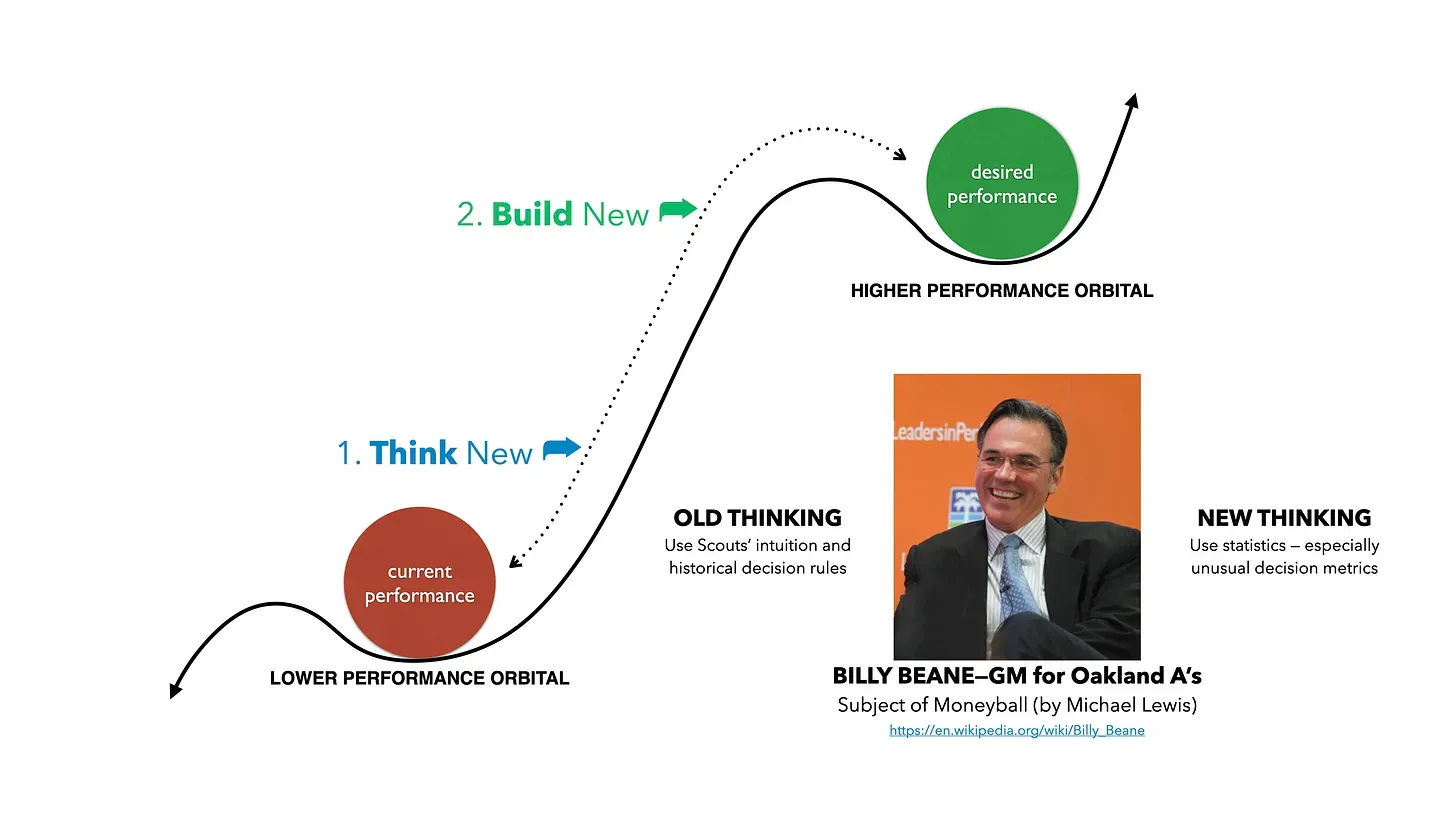 Billy Beane’s success in making the A’s competitive is an example of Double-loop Learning, a concept developed by Chris Argyris. By challenging and altering conventional assumptions about what constitutes high-valued baseball players, Billy Double-looped the problem of poor performance.
Billy Beane’s success in making the A’s competitive is an example of Double-loop Learning, a concept developed by Chris Argyris. By challenging and altering conventional assumptions about what constitutes high-valued baseball players, Billy Double-looped the problem of poor performance.
DOUBLE-LOOP LEARNING — WHY IT’S CRUCIAL TO ACHIEVING HIGHER PERFORMANCE When confronted with problems, issues, and challenges, we become motivated to address them. We recognize the gap between our aspirations and our current reality; the gap motivates us to analysis and action. In the face of such a gap, we must devise a plan, make a decision, or develop a strategic approach.
When confronted with problems, issues, and challenges, we become motivated to address them. We recognize the gap between our aspirations and our current reality; the gap motivates us to analysis and action. In the face of such a gap, we must devise a plan, make a decision, or develop a strategic approach.
The strategy we construct doesn’t come from the ether; it’s a product of our mental models of reality. M. Scott Peck aptly describes these models as our mental maps of the world. These mental models represent the causal assumptionswe employ to make sense of — to understand — how the universe works. They must include our assumptions about the underlying causes of the problem: without a clear understanding of the causes, we are unable to develop an effective strategy.
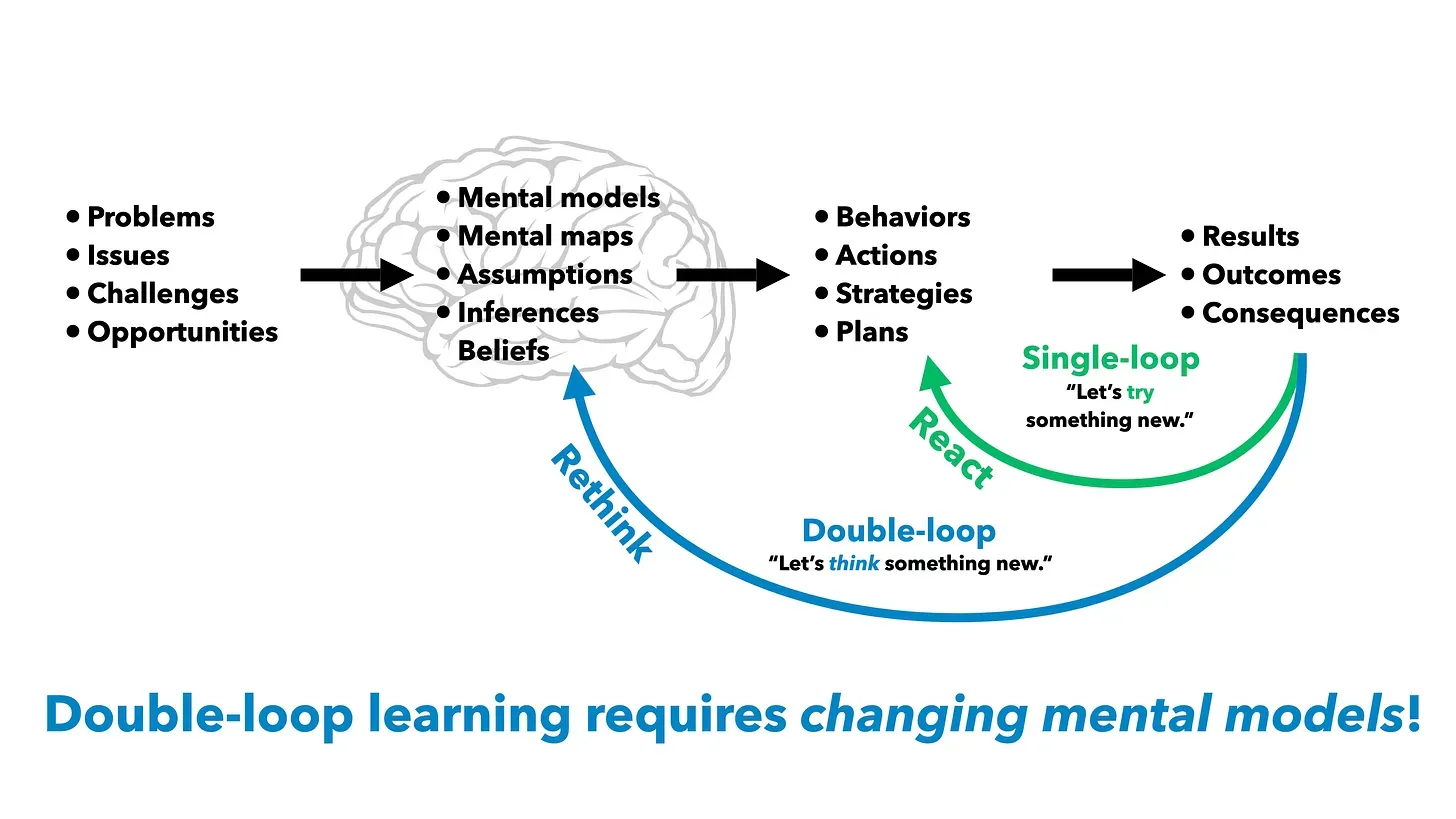 Therefore, we run problems through our existing mental models of those challenges (second column from the left in the diagram). By drawing upon our assumptions about the causes of the issue, we determine the most suitable plan or strategy. Subsequently, we execute this strategy, taking concrete actions (the second column from the right in the diagram).
Therefore, we run problems through our existing mental models of those challenges (second column from the left in the diagram). By drawing upon our assumptions about the causes of the issue, we determine the most suitable plan or strategy. Subsequently, we execute this strategy, taking concrete actions (the second column from the right in the diagram).
Our actions and behaviors lead to tangible results, outcomes, and consequences (the far right column). If we have the right strategy and execute it effectively, the outcome will be positive: we successfully resolve the issue and narrow the gap between our aspirations and reality.
The diagram and accompanying text provided in Conversational Capacity by Craig Weber offers further insights into this process.
“Obviously, proactive double-loop learning is the preferable option, and getting people with differing and conflicting views to lean into their differences is essential. ‘If people don’t engage across the divide of their differences, there is no learning,’ says Ron Heifetz.’ People don’t learn by looking in the mirror. They learn by talking with people who have different points of view.’”4
They learn by collaborating with others to identify, challenge, and modify their mental models. However, one challenge is that it can be difficult to recognize our own mental models. They become like the water we swim in; when asked about our mental maps, we might respond, “What water?” This is why ecosystem strategy mapping — surfacing and challenging our mental models — is a valuable tool.
WE MUST RETHINK…NOT REACT
As the previous diagram illustrates, our typical response to a challenge is to react. We don’t question our understanding of the world; we simply continue as if we know the exact cause of the issue. We modify our strategy only slightly. For instance, if sales still decline despite reducing prices, we might lower the price further. In many cases, lowering prices can boost sales in the short term; however, this strategy can also lead to long-term sales declines if our capacity is insufficient to meet the increased demand, resulting in lower customer satisfaction.
This type of strategy adjustment — tweaking around the margins without questioning our mental models — is what Chris Argyris labeled Single-loop Learning. Single-loop Learning is our default mode of operation. It serves us well in many situations — for example, when we feel our hand burning, we know it’s from the stove we’ve placed it on, so we simply remove the hand.
However, Single-loop Learning — although efficient because it requires minimal inquiry and reflection — is often insufficient to solve problems or develop strategies in the face of adaptive challenges. Adaptive challenges, by definition, defy routine problem-solving. We don’t truly understand what creates those challenges, so how can we effectively solve for them?
THE FINANCIAL SERVICES COMPANY DOUBLE-LOOPED THE PROBLEM
This is where it’s crucial to reevaluate our mental models: we need to adopt a Double-loop approach to problem-solving.
Double-loop Learning involves first ceasing our reactive behavior and then initiating reflective thinking. We must examine, challenge, and change our assumptions about the issues and the cherished beliefs we hold dear that hinder their resolution. We identify the gaps between our mental models and the real world; if those gaps are incorporated, our mental models would become more congruent with reality.
A more pertinent question arises: what are our misconceptions about the causes of the challenge that are simply incorrect? These misguided beliefs might inadvertently exacerbate the problem.
For instance, the financial service company’s impulsive decision to hire more employees actually worsened the situation — contributing to a more rapid turnover rate and heightened workplace stress.
ECOSYSTEM MAPS — BUILT WITH SYSQ — ILLUMINATE AND TRANSFORM OUR MENTAL MODELS
The financial services team and their extended organizational partners developed actionable insights by creating the claims ecosystem map. A less-than-obvious truth of the SysQ Process is that actionable insights aren’t generated in a single, two-hour meeting filled with PowerPoint slides. Instead, insight — Double-loop Learning — requires an extended process involving multiple meetings where a team or coalition collaboratively builds a map (and often utilizes other SysQ Tools). Such meetings require effort, can be emotionally charged as the team challenges their understanding of reality, and work best if spaced out enough to provide ample individual reflection.
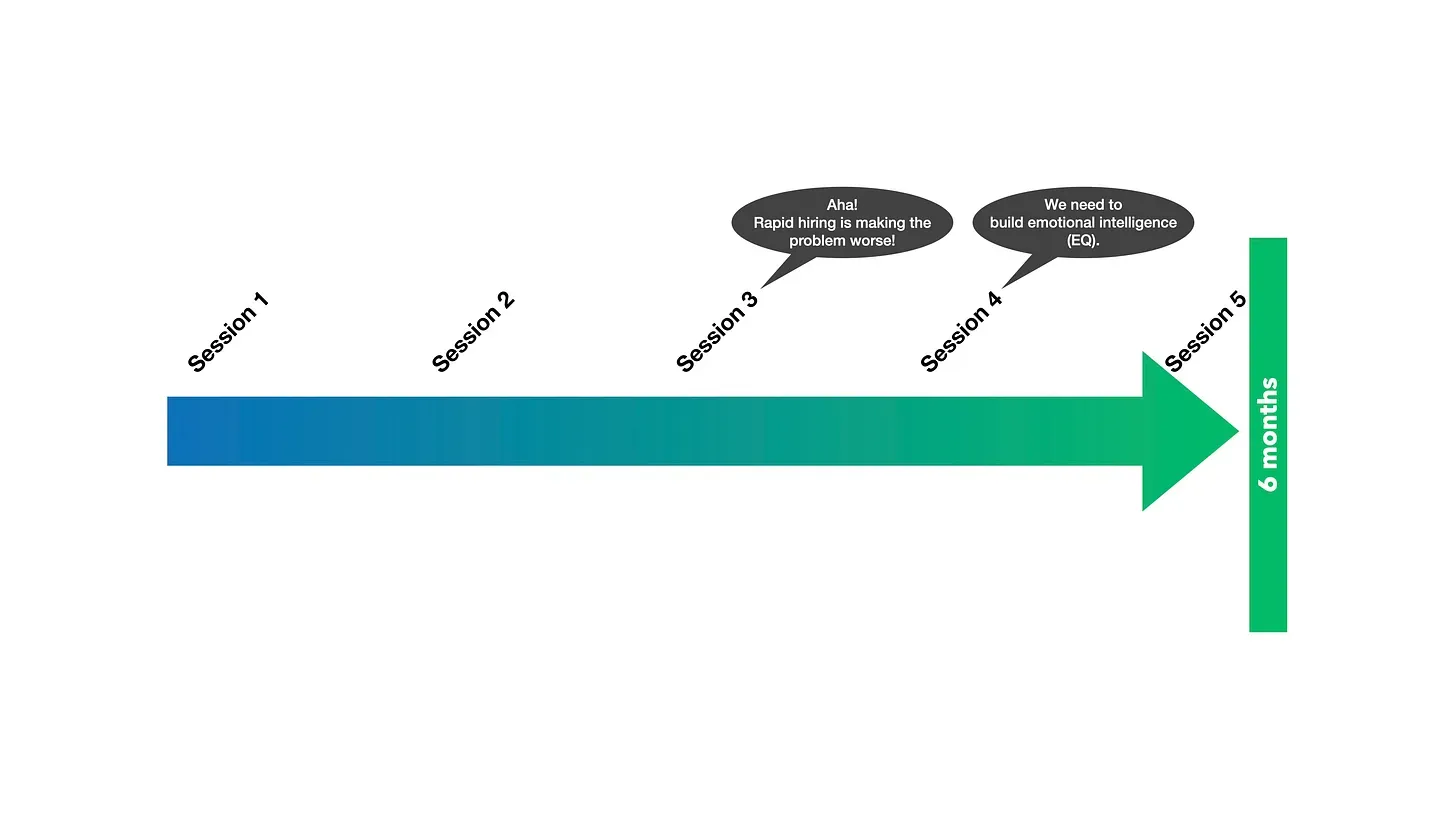 In the claims process, it was during the third of five half-day sessions that the mapping team had an “Aha moment” they realized their initial hiring strategy was exacerbating the problem. It took another session before they also identified the need to incorporate emotional intelligence as a crucial aspect of the workforce strategy.
In the claims process, it was during the third of five half-day sessions that the mapping team had an “Aha moment” they realized their initial hiring strategy was exacerbating the problem. It took another session before they also identified the need to incorporate emotional intelligence as a crucial aspect of the workforce strategy.
Similarly, it took several mapping sessions for the Huntsville coalition to recognize that their strategy of importing seasoned STEM professionals was hindering their ability to attract and retain the workforce of the future. They also identified the “soft stuff” they needed to implement, such as creating a vibrant arts and culture scene.
Neither the financial services company nor the community coalition would have achieved Double-loop insights in a single hour PowerPoint presentation from external experts. The team would likely have dismissed external experts by claiming they lacked understanding of the organization’s or community’s dynamics.
Double-loop Learning occurs during collaboration. It requires surfacing, exchanging, questioning, transforming, and integrating mental models. It’s impossible to achieve Double-loop learning simply by wishing for it within the confines of a single session. There’s no “watch me wave my wand and poof…the magic happens” that will occur. Attempting to generate insight in a single session leads to getting stuck on a Single-loop hamster wheel.
‘A slow sort of country!’ said the Queen. ‘Now, here, you see, it takes all the running you can do, to keep in the same place.
If you want to get somewhere else, you must run at least twice as fast as that!’
— Lewis Carroll, Alice in Wonderland
I’m sure you can relate to feeling like your organization, coalition, or clients are stuck on a hamster wheel, as if you’re Alice in Wonderland running faster and faster to stay in the same place.
Double-loop learning is essential to stepping off the hamster wheel. SysQ and an Ecosystem Strategy Mapping Process can facilitate Double-loop learning — lifting an organization or community to a higher performance orbital.
BUILDING ECOSYSTEM STRATEGY MAPS FACILITATE DOUBLE-LOOP LEARNING
Elevating to a higher performance orbital system requires collaboration and dialogue among and across organizational leadership and contributing stakeholders. To guide a successful transformation, it’s crucial for groups across the ecosystem — departments within the organization and partners outside — to comprehend and visualize how the system functions. However, our current understanding often falls short, leading to flawed assumptions that exacerbate our challenges.
Ecosystem mapping is a valuable tool to gain a comprehensive operational view of the system, enabling us to make informed changes and enhance its performance. By applying the SysQ Process and Skills in constructing ecosystem strategy maps, we significantly increase the likelihood of achieving Double-loop Learning.
1
Sterman, John. Learning from evidence in a complex world. Am J Public Health. 2006 Mar;96(3):505-14. doi: 10.2105/AJPH.2005.066043. Epub 2006 Jan 31
2
Collins, J., & Porras, J. I. (1994). Built to last: Successful habits of visionary companies. HarperBusiness.
3
https://en.wikipedia.org/wiki/Moneyball:_The_Art_of_Winning_an_Unfair_Game
4
Weber, Craig, Conversational Capacity: The Secret to Building Successful Teams That Perform When the Pressure Is On
Additional Resources
Books
Book title as link | Description
Articles
Article title as link | Description
Online Resources
Resource title as link | Description






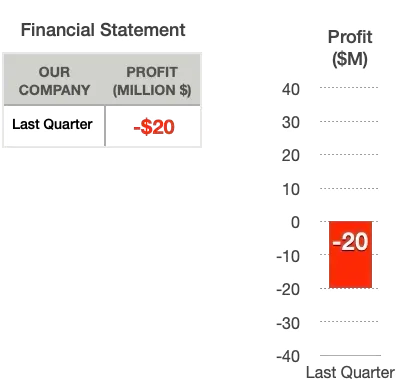 Bad, right? Worried?
Bad, right? Worried?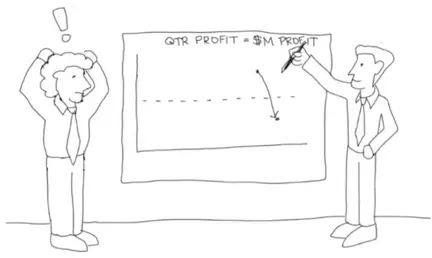
 Now how do you feel?
Now how do you feel?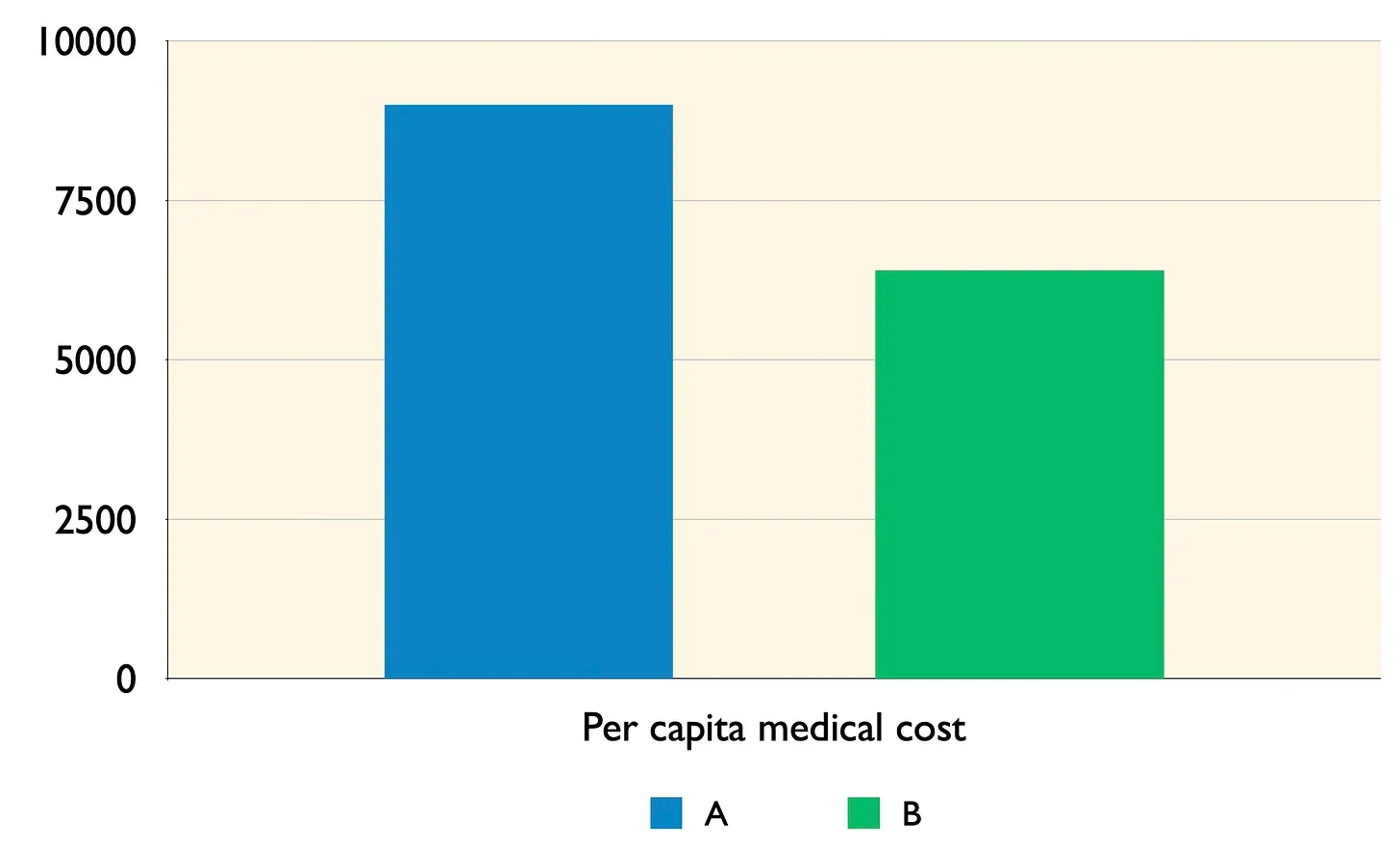


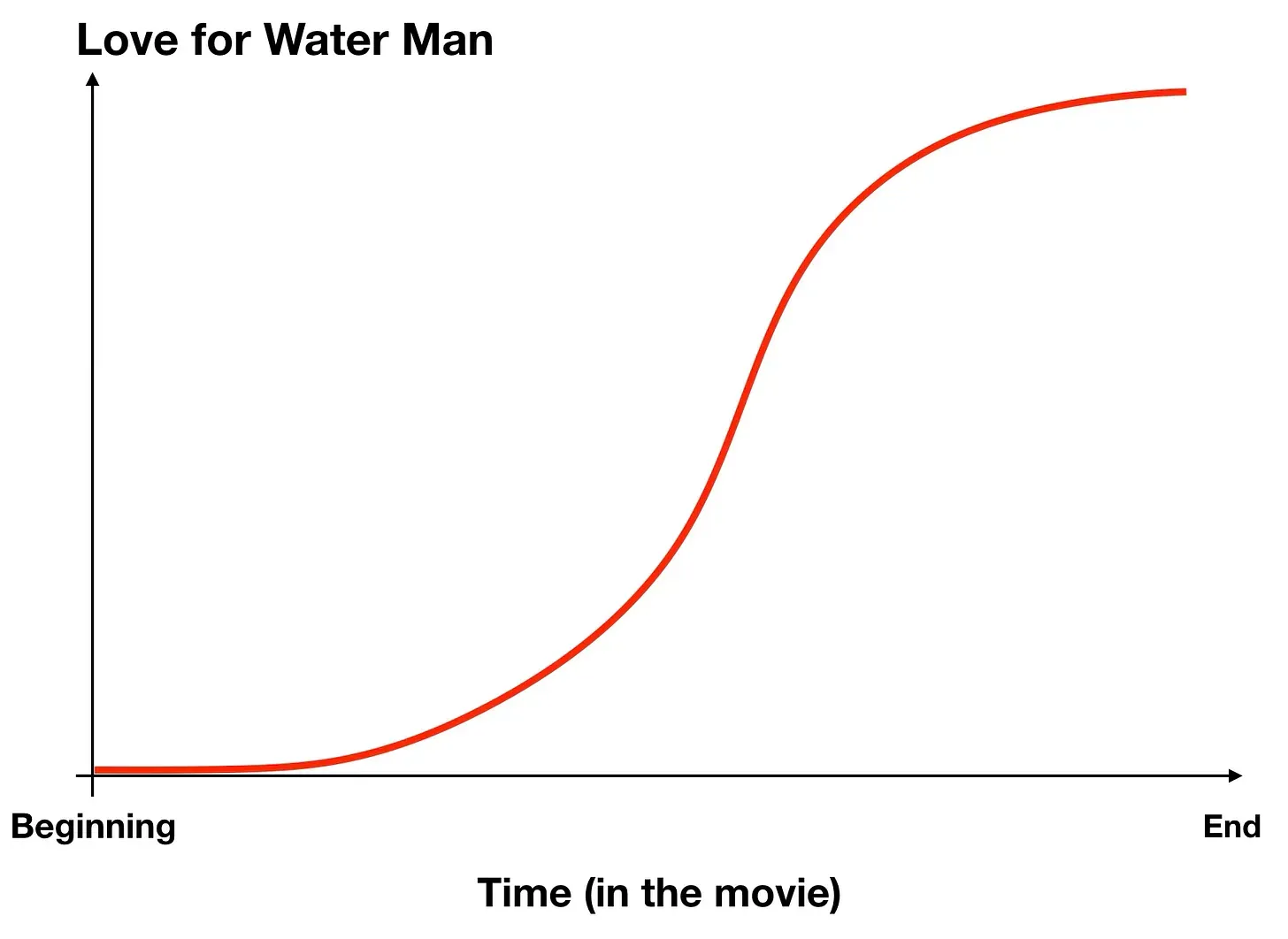


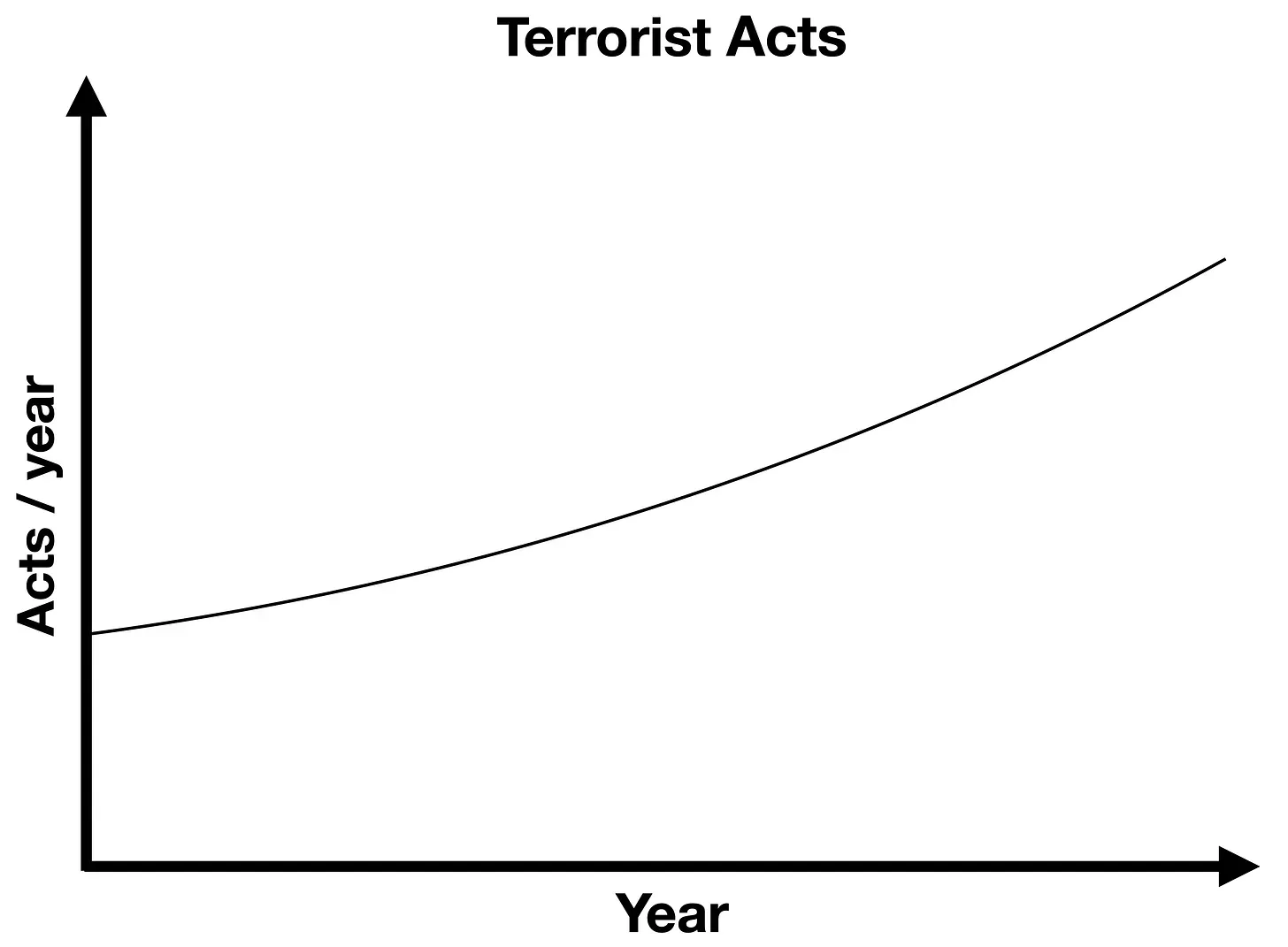
 LINEAR Thinking would suggest that an intervention that kills terrorists would work to reduce terrorist activity. However, by applying FEEDBACK LOOP Thinking we can see it will likely kill people who are not terrorists; this will motivate more potential terrorists to enroll in terrorist organizations and eventually be trained to commit acts. This would create a nasty reinforcing feedback loop (R1) known as a vicious cycle.
LINEAR Thinking would suggest that an intervention that kills terrorists would work to reduce terrorist activity. However, by applying FEEDBACK LOOP Thinking we can see it will likely kill people who are not terrorists; this will motivate more potential terrorists to enroll in terrorist organizations and eventually be trained to commit acts. This would create a nasty reinforcing feedback loop (R1) known as a vicious cycle.